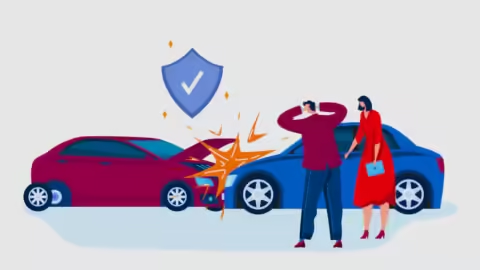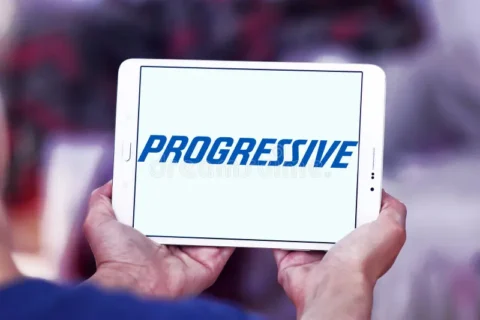Auto insurance isn’t just a legal requirement—it’s a vital financial safeguard that protects you and your loved ones from the unpredictable costs of accidents, theft, and natural disasters. Did you know that nearly 90% of drivers in the United States are required to carry auto insurance by law, yet many remain unaware of how their premiums are determined or the best ways to secure affordable, comprehensive coverage? In this comprehensive guide, we’ll cover every aspect of auto insurance—from its definition and historical evolution to the factors that influence rates, modern innovations, and common misconceptions. Whether you’re a new driver or a seasoned motorist, understanding auto insurance is essential for making informed financial decisions and ensuring your peace of mind on the road.
In this post, we will cover:
- A Compelling Introduction: Why auto insurance matters and key statistics that highlight its importance.
- Straightforward Definition: What auto insurance is and the essential characteristics that define it.
- Historical and Contextual Background: A look at the origins and evolution of auto insurance, including notable milestones and historical anecdotes.
- In-Depth Exploration / Main Body: Detailed analysis of key components, risk factors, and types of auto insurance products.
- Real-World Examples and Case Studies: Practical scenarios illustrating how auto insurance works in everyday life.
- Importance, Applications, and Benefits: How auto insurance impacts individuals, society, and businesses.
- Common Misconceptions and FAQs: Debunking myths and answering frequently asked questions to clear up confusion.
- Modern Relevance and Current Trends: Discussion of recent technological innovations, regulatory changes, and market trends in the auto insurance industry.
- Conclusion and Call-to-Action: A succinct summary of key points and an invitation to further explore, share, and comment on the topic.
Let’s dive in and discover everything you need to know about auto insurance.
Introduction: Why auto insurance is Essential
Imagine being involved in a severe accident without any financial backup—repair bills, medical expenses, and legal fees could quickly devastate your finances. Auto insurance exists to protect you from these unpredictable expenses and to ensure that you can get back on the road without facing crippling debt. With over 250 million vehicles on the road in the United States alone, auto insurance isn’t just a safety measure; it’s a cornerstone of personal financial security.
Why This Article Matters:
- Time and Cost Savings: Learning how auto insurance premiums are determined can help you identify opportunities for savings.
- Informed Decision-Making: Understanding the factors that influence your insurance quote empowers you to shop around and negotiate better rates.
- Comprehensive Protection: A deep dive into auto insurance products will ensure that you know exactly what you’re covered for and how to tailor your policy to your needs.
Throughout this guide, we will demystify the world of auto insurance and equip you with the knowledge to make smart, well-informed choices for yourself and your family.
What Is Auto Insurance?
Definition and Essential Characteristics
Auto insurance is a contract between you (the policyholder) and an insurance company. In exchange for premium payments, the insurer agrees to cover specified financial losses in the event of an accident or other vehicle-related incidents. This coverage can include liability for bodily injury and property damage, as well as comprehensive and collision coverage for your own vehicle.
Key Characteristics of Auto Insurance:
- Risk Protection: It protects you against financial losses resulting from accidents, theft, vandalism, natural disasters, and other risks.
- Liability Coverage: Covers legal expenses and damages if you are found at fault in an accident.
- Optional Coverages: Includes collision, comprehensive, uninsured/underinsured motorist, and personal injury protection options.
- Regulated Product: Auto insurance is highly regulated at the state level to ensure consumer protection and solvency of insurers.
- Premium-Based Pricing: Premiums are calculated based on various risk factors including driving history, vehicle type, location, and coverage amounts.
In essence, auto insurance is a financial tool that helps you manage the risks associated with driving, ensuring that you are not left with insurmountable costs in the event of an accident.
Historical and Contextual Background
The Origins of Auto Insurance
Auto insurance as we know it today has evolved significantly over the last century. With the invention of the automobile in the late 19th century, the need for a system to protect drivers and others on the road became apparent. Early auto insurance was rudimentary and often manually underwritten, but it laid the foundation for the sophisticated industry we have now.
Key Milestones in Auto Insurance Evolution:
- Early 1900s:
As automobiles became more common, the first auto insurance policies were introduced to cover basic liability. These early policies were designed to protect drivers from the significant financial burden of accidents. - 1930s – The Founding Era:
In 1937, Progressive Mutual Insurance Company was founded by Joseph Lewis and Jack Green in Cleveland, Ohio. Their innovative approach set the stage for modern auto insurance by focusing on affordability and customer service. - 1950s – Expanding Coverage:
The post-war era saw a rapid increase in automobile usage, leading insurers to expand coverage options beyond basic liability. Companies began to offer collision and comprehensive coverage as part of their policies. - 1960s – Standardization and Regulation:
As auto insurance became mandatory in many states, regulators began to standardize policies and rates. This period marked significant improvements in underwriting practices and risk assessment. - 1990s – Digital Revolution:
The introduction of the internet revolutionized auto insurance. Consumers could now obtain multiple insurance quotes online, compare rates, and purchase policies digitally. Progressive was among the first to embrace this shift, launching its website and offering online purchasing options. - 2000s to Present – Technological Innovations:
The advent of telematics, usage-based insurance programs like Progressive’s Snapshot®, and mobile apps has transformed auto insurance, making it more personalized, efficient, and customer-friendly.
These historical developments underscore how auto insurance has continuously adapted to meet the changing needs of society and the evolving risks of modern driving.
In-Depth Exploration: Key Components of Auto Insurance
1. Types of Auto Insurance Coverage
Auto insurance policies can be customized to fit your specific needs, and most policies include a variety of coverage types. Below, we break down the most common types:
Liability Insurance
- Bodily Injury Liability:
Covers medical expenses, lost wages, and legal fees if you cause an accident that injures another person. - Property Damage Liability:
Pays for damage you cause to someone else’s property, including vehicles and other structures. - Why It’s Important:
Liability coverage is required by law in most states and protects you from significant financial losses if you are found legally responsible for an accident.
Collision Coverage
- Definition:
Pays for repairs or replacement of your own vehicle if you collide with another object or vehicle, regardless of fault. - Ideal For:
Drivers with newer or more expensive vehicles, where repair costs can be high.
Comprehensive Coverage
- Definition:
Covers damage to your vehicle caused by events other than collisions, such as theft, vandalism, natural disasters, or hitting an animal. - Key Benefit:
Provides broader protection and peace of mind, especially in areas prone to severe weather or high crime rates.
Uninsured/Underinsured Motorist Coverage
- Definition:
Protects you if you are involved in an accident with a driver who has no insurance or insufficient insurance coverage. - Importance:
Ensures that you receive adequate compensation for injuries or damages when the at-fault driver cannot cover the costs.
Personal Injury Protection (PIP) or Medical Payments Coverage
- Definition:
Covers medical expenses for you and your passengers regardless of fault, and may also cover lost wages and other related expenses. - Variation:
PIP is required in no-fault insurance states, while Medical Payments Coverage is optional in others.
Optional Coverages
- Rental Car Reimbursement:
Pays for a rental car while your vehicle is being repaired after a covered incident. - Roadside Assistance:
Provides services such as towing, battery jump-starts, and tire changes. - Gap Insurance:
Covers the difference between your car’s actual cash value and the balance owed on a loan or lease if your car is totaled.
These coverages can be mixed and matched based on your driving habits, vehicle value, and personal needs, ensuring that your auto insurance policy is tailored to provide optimal protection.
2. Factors Influencing Auto Insurance Premiums
Auto insurance premiums are determined by a variety of factors that insurers use to assess your risk level. Key factors include:
Personal Factors
- Driving Record:
A history of accidents or traffic violations can significantly increase your premium. - Age and Experience:
Younger drivers and those with less driving experience typically face higher rates due to increased risk. - Credit Score:
Insurers often use credit history as an indicator of risk; better credit scores can lead to lower premiums. - Marital Status:
Married drivers sometimes receive lower premiums as they are statistically less likely to be involved in accidents.
Vehicle Factors
- Make and Model:
High-performance or luxury vehicles are more expensive to insure due to higher repair costs and theft risks. - Vehicle Age:
Newer vehicles generally have higher premiums, though modern safety features can help lower costs. - Safety Features:
Cars equipped with airbags, anti-lock brakes, and advanced driver-assistance systems (ADAS) can qualify for discounts. - Annual Mileage:
The more you drive, the higher the risk of accidents, leading to increased premiums.
Geographic Factors
- Location:
Urban areas with higher traffic density, crime rates, and accident statistics generally have higher insurance premiums than rural areas. - Weather and Natural Disasters:
Areas prone to severe weather, such as hurricanes or hail storms, may see higher premiums due to increased repair and claim costs.
Coverage Options
- Deductible Amount:
Choosing a higher deductible generally lowers your premium, but means you’ll pay more out-of-pocket in the event of a claim. - Coverage Limits:
Higher coverage limits offer better protection but come at a higher cost. - Discounts and Bundling:
Taking advantage of discounts (safe driver, multi-car, bundling with homeowners insurance) can significantly reduce premiums.
By understanding these factors, you can take steps to improve your risk profile—such as maintaining a clean driving record or installing safety features in your vehicle—to lower your auto insurance premiums.
3. Technological Innovations in Auto Insurance
Technology has revolutionized the auto insurance industry in recent years. Here are some of the most notable innovations:
Telematics and Usage-Based Insurance
- Snapshot® and Similar Programs:
Programs like Progressive’s Snapshot® monitor driving behavior via a device installed in your vehicle. Safe driving habits such as smooth braking and moderate speeds can lead to personalized discounts. - Benefits:
Encourages safer driving, reduces accident rates, and can significantly lower premiums for responsible drivers.
Online Comparison Tools and Digital Platforms
- Instant Quotes:
Websites and mobile apps allow consumers to obtain multiple auto insurance quotes in minutes, making it easier to compare and choose the best deal. - Policy Management:
Digital platforms enable customers to manage their policies, file claims, and update personal information with ease. - Customer Engagement:
Interactive tools and educational content help demystify auto insurance, empowering consumers to make informed decisions.
Artificial Intelligence and Big Data Analytics
- Risk Assessment:
AI algorithms analyze vast amounts of data to accurately assess risk and determine premiums. This leads to more personalized pricing and competitive rates. - Fraud Detection:
Advanced data analytics help insurers identify fraudulent claims, which can ultimately help reduce costs for all policyholders.
These technological advancements have not only streamlined the process of obtaining auto insurance quotes but also improved the overall customer experience, making auto insurance more accessible and affordable.
Real-World Examples and Case Studies
To illustrate how auto insurance works in practice, let’s consider a few real-world examples:
Case Study 1: Lowering Premiums Through Safe Driving Programs
Scenario:
Alex, a 28-year-old driver with a clean record and low annual mileage, enrolled in a telematics program offered by his auto insurer. The program monitored his driving habits and rewarded him for safe driving with significant discounts.
Outcome:
After a few months, Alex’s premium dropped by 20%, saving him approximately $200 per year. This example demonstrates how programs like Snapshot® can reward safe drivers and lower overall insurance costs.
Case Study 2: Benefits of Bundling Insurance Policies
Scenario:
The Johnson family, who owns a home and two vehicles, decided to bundle their auto and homeowners insurance policies with the same provider. By doing so, they qualified for a multi-policy discount.
Outcome:
The family saved an average of 10% on their combined premiums, resulting in substantial annual savings. Bundling not only simplifies policy management but also ensures better overall value for money.
Case Study 3: Adapting to High-Risk Environments
Scenario:
Maria lives in a metropolitan area with high rates of traffic congestion and theft. Her auto insurance quote was higher than average due to the increased risk factors. However, by installing advanced anti-theft devices and taking a defensive driving course, she was able to lower her risk profile.
Outcome:
Her premium was reduced by 15%, making her auto insurance more affordable despite living in a high-risk area. This case highlights the importance of mitigating risk factors to secure better insurance quotes.
Case Study 4: Customized Coverage for High-Value Vehicles
Scenario:
Robert, an owner of a luxury vehicle, needed comprehensive coverage that included specialized parts and repair services. Although his initial auto insurance quote was high due to the vehicle’s value, he opted for a policy with higher deductibles and additional safety features installed.
Outcome:
By tailoring the policy to his specific needs, Robert managed to balance coverage and cost, ensuring that he was adequately protected without overpaying. This case illustrates how customization plays a critical role in determining auto insurance quotes.
Importance, Applications, and Benefits of Auto Insurance
Financial Security and Peace of Mind
Auto insurance is a critical component of financial planning for drivers. It not only protects you against the high costs of accidents and repairs but also ensures that you are in compliance with legal requirements.
Key Benefits:
- Risk Mitigation:
Auto insurance helps you manage the financial risk associated with driving. In the event of an accident, it covers medical expenses, property damage, and legal costs. - Legal Compliance:
Most states require drivers to carry minimum auto insurance coverage, making it essential for legal driving. - Protection of Assets:
By covering repairs or replacement costs for your vehicle, auto insurance helps protect your valuable assets. - Peace of Mind:
Knowing that you are financially protected allows you to drive with confidence and focus on other aspects of your life. - Discount Opportunities:
Programs such as safe driver discounts, multi-car discounts, and bundling with other policies can significantly reduce your premiums.
Societal and Economic Impact
Auto insurance plays an important role in the broader economy:
- Economic Stability:
By providing a safety net for drivers, auto insurance helps maintain financial stability for millions of households. - Market Competition:
The competitive nature of auto insurance drives innovation and helps keep premiums affordable. - Job Creation:
The auto insurance industry employs thousands of people in underwriting, claims processing, sales, and customer service. - Consumer Empowerment:
Transparent insurance quotes and comparison tools empower consumers to make better financial decisions.
Applications in Business
Businesses also rely on auto insurance to manage risk:
- Commercial Auto Insurance:
Companies that rely on vehicles for their operations need commercial auto insurance to protect against accidents, property damage, and liability claims. - Fleet Management:
Businesses with fleets benefit from usage-based insurance programs that can lower costs through monitoring driving habits. - Risk Management:
Tailored insurance policies help businesses manage their exposure to risk, ensuring operational continuity and protecting against financial losses.
Common Misconceptions and FAQs About Auto Insurance
Common Misconceptions
Myth 1: Auto insurance is just a legal formality.
Reality:
Auto insurance provides critical financial protection in the event of accidents, theft, or natural disasters, beyond just fulfilling legal requirements.Myth 2: A lower premium means less coverage.
Reality:
While premiums do vary based on risk, a lower premium does not necessarily equate to inferior coverage. It often reflects favorable risk factors and effective discount strategies.Myth 3: You only need auto insurance if you drive frequently.
Reality:
Even low-mileage drivers face risks. Insurance is important regardless of how often you drive, as accidents can happen unexpectedly.Myth 4: Online auto insurance quotes are inaccurate.
Reality:
Reputable online comparison tools use up-to-date data and sophisticated algorithms to provide accurate quotes, making it easier for consumers to compare options.Myth 5: Bundling policies doesn’t affect auto insurance rates.
Reality:
Bundling auto insurance with other policies, such as homeowners or renters insurance, can lead to significant discounts and overall savings.
Frequently Asked Questions (FAQs)
Q1: What exactly is auto insurance?
A: Auto insurance is a contractual agreement in which an insurer provides financial protection against losses arising from vehicle-related incidents, such as accidents, theft, or natural disasters, in exchange for premium payments.Q2: How is my auto insurance premium determined?
A: Premiums are determined by various factors including your driving history, vehicle type, annual mileage, geographic location, coverage options, and even credit score.Q3: What types of coverage are typically included in an auto insurance policy?
A: Common coverages include liability (bodily injury and property damage), collision, comprehensive, uninsured/underinsured motorist, personal injury protection (PIP), and optional coverages like rental car reimbursement and roadside assistance.Q4: Can I reduce my auto insurance premium?
A: Yes. Maintaining a clean driving record, taking defensive driving courses, bundling policies, opting for a higher deductible, and using telematics programs can all help lower your premium.Q5: How often should I shop for auto insurance quotes?
A: It’s a good practice to compare quotes annually or whenever significant changes occur in your driving record, location, or coverage needs.Q6: Are online auto insurance quotes reliable?
A: Reputable online tools are very reliable as they use current data and sophisticated algorithms. Ensure that you provide accurate information for the most precise quotes.Q7: What is the benefit of usage-based insurance programs like Snapshot®?
A: These programs monitor your driving behavior and offer discounts based on safe driving practices, potentially reducing your premium if you drive responsibly.
Modern Relevance and Current Trends in Auto Insurance
Digital Transformation in Auto Insurance
The auto insurance industry has undergone a massive digital transformation over the past two decades:
- Online Quote Comparison:
Today, consumers can obtain multiple auto insurance quotes within minutes through websites like The Zebra and NerdWallet. This transparency helps you identify the best deals and save money. - Mobile Apps and Digital Platforms:
Insurance companies offer mobile apps that allow you to manage your policy, file claims, and access real-time information—all of which enhance customer convenience. - Telematics and Usage-Based Insurance:
Programs like Snapshot® use telematics to monitor driving behavior, offering personalized discounts that reward safe driving. - Artificial Intelligence:
AI-driven underwriting and claims processing are making auto insurance more efficient and tailored to individual risk profiles.
Consumer Behavior and Market Dynamics
Modern consumers demand more transparency, flexibility, and customization in auto insurance:
- Informed Decision-Making:
With access to detailed insurance quotes and comprehensive information online, consumers are more empowered than ever to choose the right policy. - Price Sensitivity:
The ease of comparing quotes online has led to increased price sensitivity among consumers, prompting insurers to offer more competitive rates. - Bundling Options:
Many drivers are taking advantage of bundling discounts by purchasing auto insurance alongside home, renters, or life insurance, leading to overall cost savings.
Regulatory and Economic Influences
Regulatory requirements and economic factors continue to shape the auto insurance landscape:
- State Regulations:
Each state has its own minimum coverage requirements and regulations, which affect how auto insurance policies are priced. - Economic Conditions:
Factors such as inflation, rising repair costs, and fluctuations in vehicle values directly impact premium calculations. - Consumer Protection:
Regulatory bodies like the National Association of Insurance Commissioners (NAIC) ensure that insurers maintain transparency and adhere to fair pricing practices, protecting consumers from excessive premiums.
Future Outlook
Looking ahead, the auto insurance industry is likely to continue evolving with emerging trends:
- Greater Personalization:
Advancements in data analytics and AI will lead to even more personalized auto insurance quotes based on real-time risk assessment. - Expansion of Digital Tools:
Enhanced mobile applications and online services will make it even easier for consumers to manage their policies and file claims. - Integration with Smart Technology:
Connected vehicles and smart devices may further influence auto insurance pricing, rewarding drivers for safe, eco-friendly driving habits. - Market Consolidation:
Increased competition and mergers within the industry may lead to more consolidated markets with streamlined pricing strategies. - Focus on Sustainability:
As environmental concerns grow, insurers might offer discounts for eco-friendly vehicles or sustainable driving practices.
These modern trends underscore the dynamic nature of auto insurance and highlight the continuous improvements that benefit both consumers and insurers.
Conclusion: Your Roadmap to Informed Auto Insurance Decisions
Auto insurance is more than a regulatory requirement—it’s an essential investment in your financial security and peace of mind on the road. This comprehensive guide has explored the definition, history, key components, real-world examples, and modern trends in auto insurance. By understanding how insurance quotes are calculated, the various types of coverage available, and the factors influencing your premium, you can make informed decisions that protect you, your vehicle, and your future.
Key Points Recap:
- Definition and Role:
Auto insurance is a contract that provides financial protection against losses arising from vehicle-related incidents. It covers liabilities, vehicle damage, and additional risks through various coverage options. - Historical Evolution:
From early manual underwriting to today’s AI-driven digital platforms, auto insurance has evolved dramatically to meet modern needs. - Coverage Types:
Common coverages include liability, collision, comprehensive, uninsured/underinsured motorist, and personal injury protection, each with its own benefits. - Factors Influencing Premiums:
Personal, vehicle, geographic, and economic factors all play a role in determining your auto insurance quote. - Technological Impact:
Digital transformation, telematics, and online comparison tools have made obtaining and managing auto insurance easier and more personalized. - Consumer Benefits:
Auto insurance offers financial protection, legal compliance, and peace of mind, while enabling informed decision-making and potential cost savings. - Modern Trends:
Innovations in digital technology, regulatory changes, and evolving consumer demands continue to reshape the auto insurance landscape.
Call-to-Action:
Take control of your financial future on the road by exploring auto insurance options today. Use reputable online comparison tools such as The Zebra and NerdWallet to gather multiple quotes and compare coverage. Share this comprehensive guide with friends and family, and join the conversation by leaving your comments and questions below. Your journey to informed, cost-effective auto insurance starts now—make the smart choice for your safety and financial security.
Additional Resources and References
For further reading and to expand your knowledge on auto insurance, consider these reputable sources:
- Investopedia: Auto Insurance
- Wikipedia: Auto Insurance
- The Zebra – Auto Insurance Guide
- NerdWallet: How to Shop for Car Insurance
- National Association of Insurance Commissioners (NAIC)
- Insurance Information Institute (III): Auto Insurance Basics
These resources provide detailed insights, expert analyses, and additional historical context to help you navigate the complex world of auto insurance with confidence.





